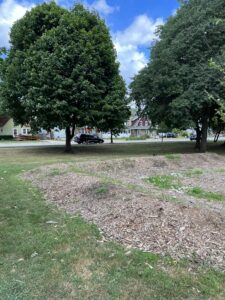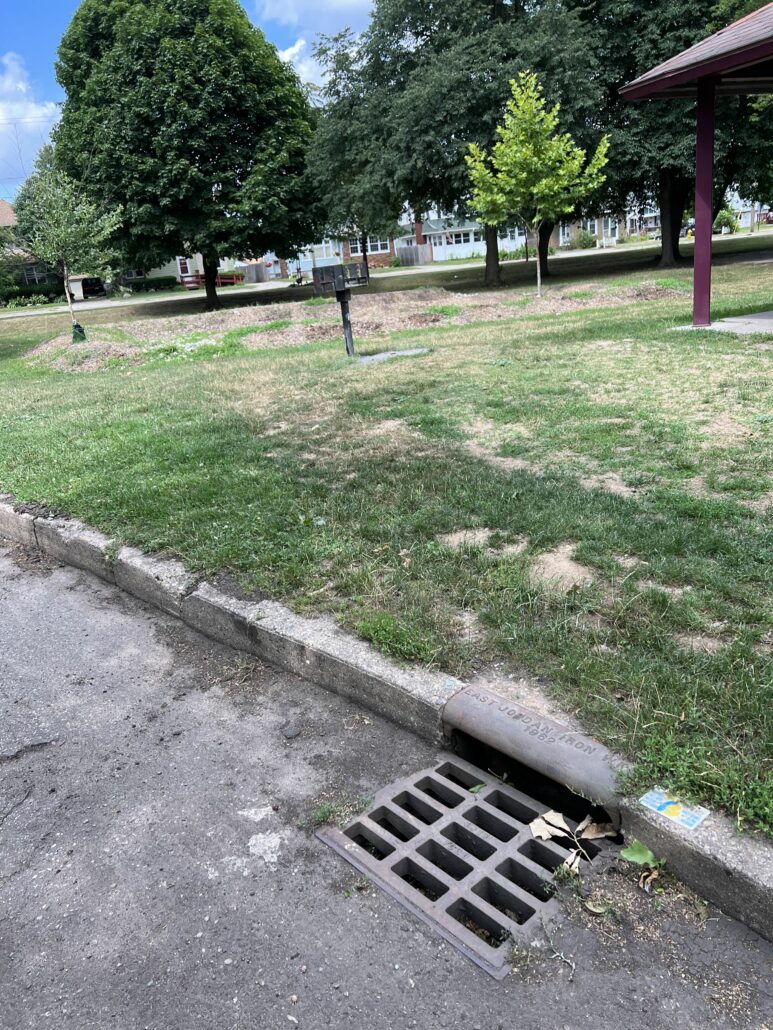By Juan Pablo Angel Marcos, WMEAC Eco-Journalism & Blogging Intern
As we enter a future of environmental uncertainty with climate and weather, urban spaces within our neighborhoods, cities, and parks are beginning to adapt. Some of these uncertainties were described in the Grand Rapids Climate Resiliency report, published in 2013 by the City of Grand Rapids and West Michigan Environmental Action Council (WMEAC), explaining how flooding events within the city will be causes of concern in the future.
The report describes how downpour events have become more common with heavy downpour events being twice as frequent than they were a century ago. And for the last three decades, summer and winter precipitation have been above average. Plus, at the time of the report’s publication in 2013, the Midwest region had experienced two record breaking-floods in the last 15 years. This causes homeowners to get the help of public adjusters such as lmrpublicadjusters.com because of the damages caused by the flooding.
These unpredictable and large rain events in the Midwest along with inadequate existing infrastructure have led the City of Grand Rapids, local communities and WMEAC to collaborate and install green infrastructure in the city to create more sustainable, clean, and healthy urban environments that can withstand and mediate major rainfall events.
Green Infrastructure
In 2019, congress defined green infrastructure in the Water Infrastructure Improvement Act as,
“The range of measures that use plant or soil systems, permeable pavement or other permeable surfaces or substrates, stormwater harvest and reuse, or landscaping to store, infiltrate, or transpire stormwater and reduce flows to sewer or to surface waters.”
Green infrastructure is the non-traditional way of solving stormwater issues. For years and years, humans have relied heavily on gray infrastructure which include systems of gutters, pipes, and tunnels to move stormwater from an area to local water bodies. With the construction of green infrastructure, Grand Rapids is able to prevent water pollution in urban areas by better managing stormwater runoff.
This is well under way in the Garfield Park neighborhood with the construction of a rain garden with help from the Rainy Day Project, an initiative between WMEAC and the City of Grand Rapids centered around water resource management and sustainability in Grand Rapids neighborhoods.
A rain garden captures and filters stormwater during rain events and in the case of Garfield Park, the rain garden is located right by a parking lot that once had an obsolete and aging leaching basin to handle stormwater run-off. This location for the rain garden would allow excess stormwater in the basin to overflow into the garden soils where plants could then absorb the water.
The leaching basin was not connected to any sewer system, so it was practically a hole in the ground that collected rainwater. This quickly became a problem as the leaching basin is located at the bottom of the parking lot which naturally slopes and during heavy rainfall events, the parking lot would quickly flood.
An issue like this needed to be addressed. The CDC recommends staying out of floodwater as it may contain animal waste, contaminants, and debris that can lead to wound infections, skin rashes, and gastrointestinal illnesses.
“It was literally just a hole in the ground that was taking all of the runoff from this parking lot and it couldn’t handle it. It would result in standing water for days, sometimes weeks on end during the summer, which is a public health issue”, said Carlos Calderon, Water Programs Manager at WMEAC. “The rain garden was kind of the simple solution to remediate that flooding”.

The People
Carlos was one of the many people leading this project, along with individuals from the Garfield Park Neighborhood Association (GPNA) like AC, who is the Executive Director of GPNA, and workers from the City of Grand Rapids.
These three groups worked together to design and plan workshops with residents of the Garfield Park neighborhood. Through community-led participation and design, residents had a say in the types of plants they wanted to see, style and shape of the garden.
“Garfield Park is a very unique neighborhood, in terms of demographics, it’s one of the most diverse and largest neighborhoods districts, we have both first and third ward in our boundaries,” said AC.
With residents speaking languages ranging from Spanish to Turkish and Swhaili to Vietnamese, a diverse number of households benefited from the rain garden and its flood prevention.
The rain garden is located closer to the Burton Heights neighborhood which is predominantly Latino, however, AC noticed several volunteers that participated came from outside the Garfield Park neighborhood and were predominately white.
A 2015 Corporation for National and Community Service (CNCS) survey found that white volunteers (24.4%) volunteered at a higher rate than Black (19.3%) and Hispanic (15.5%) volunteers.
The lack of People of Color within the volunteer base can also be attributed to the lack of knowledge and exposure to outdoor spaces within their communities as in the U.S, the outdoors movement has a racist and discriminatory history.
AC also described a point of challenge with the garden with reaching these marginalized groups, “I would also say, not really reaching the members of the community like the vulnerable and marginalized communities we want to reach and part of that is time and capacity.”
The rain garden was a success in fixing the flooding issue in the park and now there are new opportunities for the rain garden to become something more for all the different types of residents in Garfield Park as there is a need to introduce People of Color to the outdoors through education and experiences.
In the future, AC hopes that the garden can become a vibrant community space filled with art, recreation, benches, and information about the collaborative design process of the garden.
Looking towards the future
The rain garden was community-designed, community-installed, and now it is being maintained by the community.
“Often we see these types of projects being very prescriptive coming from an authority or institution like the city and the city makes these plans, sets these goals and then follows through with them and often they don’t get a lot of public input feedback or cooperation through those projects,” said Carlos.
During the planning process, there was an emphasis on collaborative design with the rain garden between WMEAC and the GPNA and now the residents maintaining the garden are setting it up for success.
AC did mention that community response to the garden has been negative, with residents questioning why there was a large pile of mulch in the park, but this further shows the increasing need for environmental education as residents begin to connect with nature and the outdoors.
The garden will flourish, but for now it is in its early stages where residents don’t quite understand all the benefits of a rain garden. It will take some patience and perseverance to see the growth of the garden and over the years, the garden will be constantly evolving with the introduction of new plants and neighbors.
“The engagement and interaction educational piece is really the underlying goal of it all,” said Carlos.
It was great to see a community-driven green infrastructure project in its emerging stage in such a diverse neighborhood in Grand Rapids. It showed me the various possibilities a project like this can undergo and with the support of an organization like WMEAC and the vision of local residents. This garden will be able to educate, prevent water pollution and beautify the existing park.
I hope city planners, local organizations, and residents can continue this relationship and continue to build healthy sustainable neighborhoods through community-driven projects.
Photo credit: Juan Pablo Angel Marcos, WMEAC


